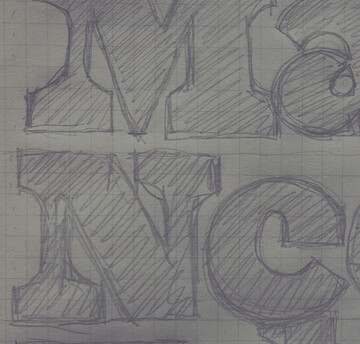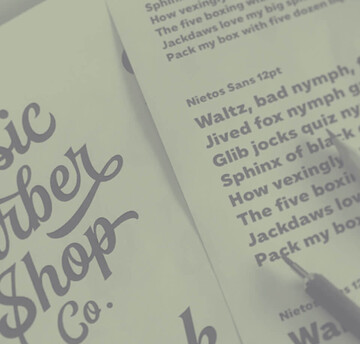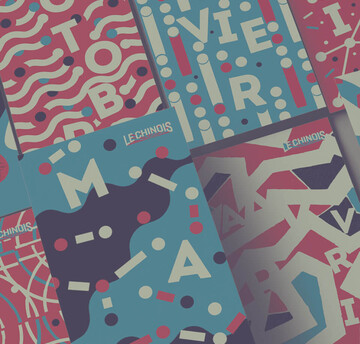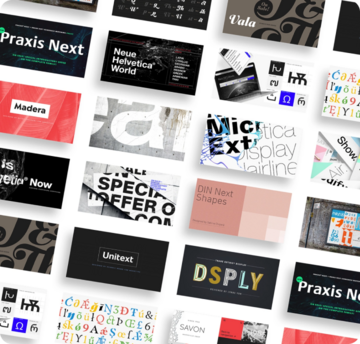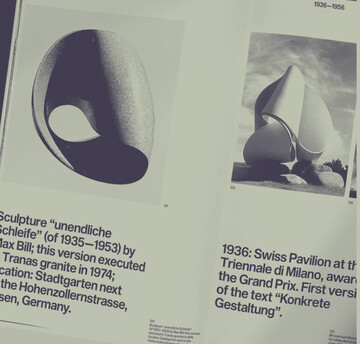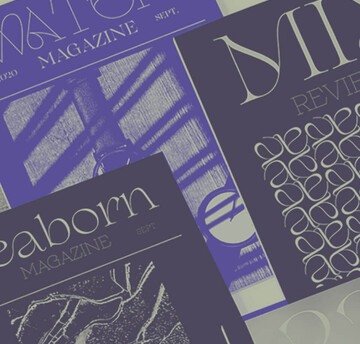Font licensing & management terms and definitions.

From servers to desktop, this licensing lexicon covers terminology related to font licensing. While these definitions are applicable to licensing fonts in general, all examples given are related to Monotype font licenses specifically. Always refer to the relevant EULA to understand more accurate definitions for a software license.
Jump to: A-Z.
A | |
| “Affiliate” | A non-party that is legally related to a contracting party, such as a minority shareholder in a company. |
| “Agreement” | A legally enforceable and binding arrangement between two or more parties. |
| “Application License” | “A Monotype license to embed fonts onto phone/tablet apps and SaaS products.” |
B | |
| “Bespoke Agreement” | A “build-your-own” licensing plan agreed offline through a conversation with Sales which vary the terms of a Plan Agreement.
|
C | |
| “Co-terming” | Aligning multiple agreements onto a single expiration date and on unified standard terms. |
| “Commercial Use” | Refers to the implementation of a font in a commercial setting. For example, when a prototype font used for an internal mock-up is approved and selected for external use, such as an e-book, it has been redesignated as a Production Font for public consumption in a business setting. Commercial use does not extend to use incidental to a purchase, such as a letter, receipt, or entrance ticket. |
| “Company Desktop License” | An expanded (add-on) desktop license from Monotype that includes the right for a company to provide fonts via cloud servers to its employees and any approved third parties (e.g., freelancers, consultants, affiliates). |
| “Consolidation” | Merging multiple agreements into one.Merging multiple agreements into one. |
| “Contractor” | A person or entity retained to do work for or on behalf of another, such as a distributor, or advertiser. Unlike an affiliate, contractor may refer to an independent business that has been hired to do a fixed service, such as a freelance designer, printers, or consultant. |
| “Copying” | Refers to reproducing work such as uploading software to the internet or sharing the file through a USB drive. |
| “Copyright” | The primary Intellectual Property right protecting creative work, such as dramatic, musical, artistic, and literary works (including computer programs and software). |
| “Copyright Owner” | The person (or organization) who has the exclusive right to use and license their copyrighted work and prevent others from doing so without permission. |
D | |
| “Derivative Work” | In fonts, derivative work means existing Font Software (as a whole or a portion) in any form being recast, transformed, adapted, or converted into another format. For example, Helvetica Flair was one of several derivative fonts based on Helvetica created without permission. |
| “Desktop License” | A Desktop License refers to font software installed directly on workstations (computers connected to printers) and designed for digital designs on printed products. Most companies have, or have had, a desktop license in their organization. |
| “Digital Ad License” | A Monotype license to use fonts in emails and HTML5 digital ads for external use. |
| “Distribute” | Refers to circulation of a font, whether intentionally or passively. For example, font software is distributed when apps containing fonts are downloaded by app users . |
E | |
| “Embedded License” | A Monotype license to distribute fonts on physical products (e.g., devices, cars, software programs). |
| “End-User License Agreement” (EULA) | An End-User License Agreement (EULA) is a license for any piece of software, including fonts. In that case, a EULA is often called a Font License Agreement (Font ULA or EULA) and gives the holder permission to use a specific font or a selection of them. |
| “ePub License” | A Monotype license to cover font usage in commercial electronic publications, such as e-books. |
F | |
| “Font | Font and typefaces are often used interchangeably, but there are key differences. A font is what you use, i.e., a certain variation of a typeface. Futura Now Text Regular size 14 pt is a variation of Futura (see typography glossary here). |
| “Font File” | A font file is a piece of software holding a typeface style. For example, Futura Now Text Regular in digital form for a website. |
| “Font License” | A font license gives you permission to use certain font files under the terms of a license agreement (see “EULA”). For example, some of the licenses offered by Monotype include: • Application license • Company Desktop License • Desktop license • Digital Ad license • ePub license • Embedded license • Server license • Webfont license |
I | |
| “Intellectual Property” (IP) | Intellectual Property refers to the legally recognized property rights present in products of human imagination, intellect, and creative expression. IP law refers to the legal constructs governing ownership of intellectual property through, for example, copyright, trademark and/or patents. |
L | |
| “Legacy Contract” | An agreement on terms that are no longer offered but are honored until the contract ends. E.g. A 2014 font EULA from Monotype would differ from EULAs available today. |
| “Legacy Desktop License” | An active “Desktop License” based on a EULA that is no longer being offered |
| “License” | Permission to make, produce, or use something that has been created by or belongs to another, usually by paying for it. Always check the License Agreement, such as a font EULA. |
| “Licensed Unit” | Refers to a group of workstations (computers and connected printers) that are permitted to use software, such as font files. Note: With Monotype Fonts, only legacy licenses contain this term. |
P | |
| “Personal or Internal Business Use” | Refers to fonts used exclusively by immediate household, your authorized employees, or your authorized agents. |
| “Plan Agreement” | Different font providers develop their own font licensing offers, including plans that can be purchased online. With Monotype, you can choose a “Plan Agreement” or “Bespoke Agreement.” “Plan Agreement” options include: o Create + Pitch, for agencies o Create + Deploy for individuals or teams o WebKit, WebKit Light or Standard for large organizations |
| “Prototype Font vs Production Font” | The difference between Prototype Fonts and Production Fonts refers to the designated context of a font, not the type of font. Prototype Fonts refer to font files used internally for testing and mock-ups; they are not intended for commercial use nor to be seen by the public. Production Fonts refer to fonts used externally for public consumption, whether for commercial use or not. For example, a marketing company might test 30 prototype fonts at a mock-up stage for a campaign, and the final version of the design might use 5 of those 30 prototype fonts. Once anticipated for public consumption, those 5 prototype fonts have now been redesignated as ‘production fonts’ and must have the appropriate Production Font license before it is released to the public. |
S | |
| “Server License” | Refers to a permission extended to a Third Party so they can use fonts hosted on a platform such as a cloud-based service, SaaS application, or content management system (CMS). With Monotype Fonts, subscribers use a server license for print-on-demand service so that their platform users can use fonts for custom printed products. |
| “Swappable Fonts” | Refer to permission to replace an original Production Font with a new Production Font. Monotype Fonts subscribers may swap a font designated for public consumption once per calendar quarter. |
T | |
| “Third Party” | A non-contracting party with whom the contracting party has a relationship (e.g., Affiliate, Vendor, Non-Employee, a Customer’s Subscribers). |
U | |
| “Use of Font Software” | This is a versatile term, but in terms of font licensing, refers to various ways an individual may engage with font software. All fonts, whether free or paid, come with a font license agreement. A font license agreement outlines out what Use is permitted. For example, when visiting a website, typing text into a form field constitutes as “Use of Font Software” but merely viewing text on a website does not. |
W | |
| “Web License” | A Monotype license to embed fonts into websites for internal and/or external use. |
| “Workstation” | Refers to any device on which a font can be used. For example, a computer. |
